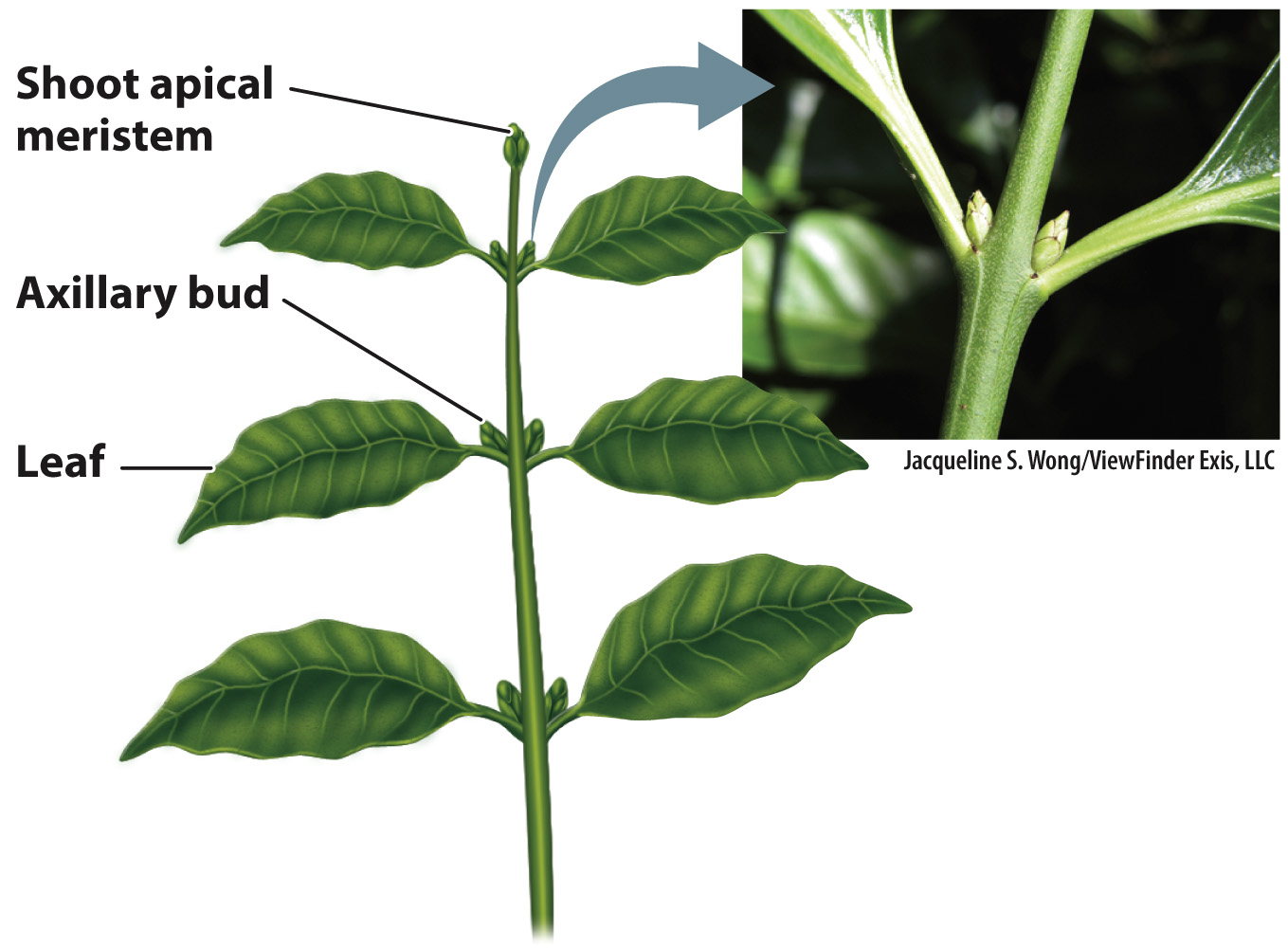In spore-dispersing vascular plants, branches form when the shoot apical meristem divides in two, giving rise to two stems, each with its own shoot apical meristem. In seed plants, branches grow out from axillary buds, which are meristems that form at the base of each leaf (Fig. 31.4). Axillary buds have the same structure and developmental potential as the apical meristem and express the same meristem identity genes. When a branch develops, the axillary bud becomes the shoot apical meristem of the new branch. Thus, most plants have many shoot apical meristems: one at the tip of each stem and branch. Axillary buds are formed at the same time as leaves, but they remain dormant until triggered to grow, and they persist even after leaves are shed. Thus, axillary buds provide seed plants with many points along their stem where new branches can form.
